How to Measure Indoor Light
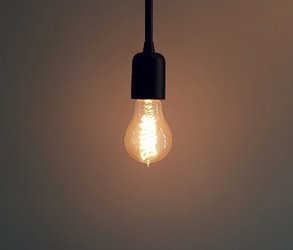
About Light
What is light? Light or visible light refers to the electromagnetic spectrum portion, which can be perceived by the human eye.
While visible light falls into the range of ~380-740 nanometers(nm), some forms of non-visible frequencies, such as infrared (longer wavelength than 700nm) and ultraviolet (shorter wavelength than 400nm), are often referred to as 'light' as well.
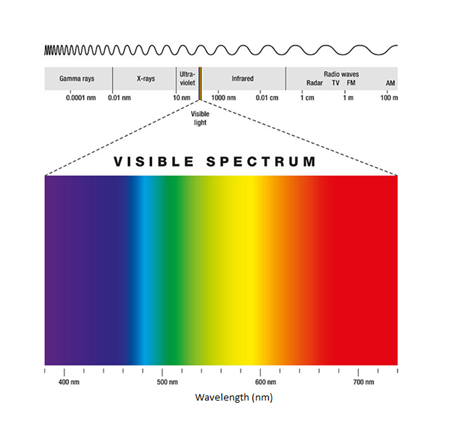
Figure 1 The electromagnetic spectrum and the visible light spectrum
You can observe individual colours around specific wavelengths. For example, green appears around 525nm, red near 635, and blue in the proximity of 420nm. A mixture of these three wavelengths achieves white light.
The calibration of most standard light intensity meters matches the human eye's response to light, as defined by the CIE photopic curve (see Figure 2 below).
.jpg)
Figure 2 The CIE photopic curve ~380-740 nanometers(nm)
Types of Indoor Light
There are three main types of light fitting for most indoor settings; each generates light by different means. These are;
- Incandescent: An incandescent bulb creates light by heating a wire filament until it glows.
- LED: Growing rapidly in popularity for indoor environments, LED lights utilise green, red, and blue to achieve warm or cool white tones.
- Fluorescent: A fluorescent lamp exploits low-pressure mercury-vapour gas discharge. An applied electric current excites the mercury vapour to produce short-wave ultraviolet light, which you cannot see with the naked eye. A coating of phosphor lining fluorescent lamps glow when UV light is applied. This is the light you see.
Measuring Indoor Light
When measuring light, there are a few definitions you need to know;
- Luminous Flux: The total amount of light produced in all directions is the luminous flux.
- Lumen: A lumen is the SI derived unit of luminous flux.
- Lux: Lux (the result you see on your light intensity meter) is one lumen per square meter. Lux indicates the amount of light falling on a surface.
Compared to choosing a light meter, the task of measuring light is usually straightforward. The easiest method is with a light intensity meter (also known as a lux meter or light meter.) To determine the Lux value, remove the sensor cap, and place the light intensity meter onto the surface you wish to observe. For home and work settings, this will be on the work surface, such as a desk. Measuring this spot will provide an accurate representation of the light intensity reflected in a person's eyes when the surface is in use.
However, measurement complexities can arise because incandescent, LED, and fluorescent lights produce light very differently. Each produces a different spectral profile, which, in turn, often requires a different type of light meter sensor.
Figure 3 (below) illustrates the varying sensitivity of the human eye to incandescent bulbs, fluorescent lights, as well as warm and cool LED lights.
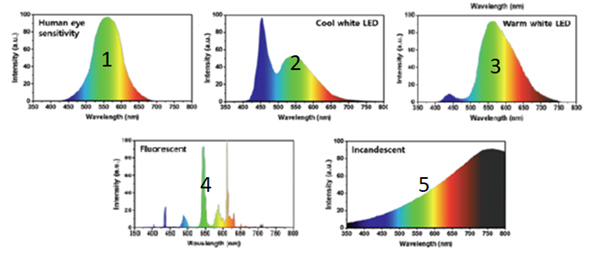
Figure 3 Spectral profile examples of various light sources
Many general-use lux meters reproduce the eyes' spectral response when taking a measurement (graph 1), making them well-suited to reading the intensity of light emitted by incandescent bulbs. On the other hand, using general-use lux meters to measure cool LED light can lead to errors. To illustrate, in graph 2 (above), you can see a significant amount of visible light, along with a high energy spike in the blue spectrum between 400-500nm. Comparing this spike in cool LED light with the human eye sensitivity graph (graph 1) makes it easy to understand that measurement miscalculation can occur if you use a standard light meter to determine an LED's light intensity.
Some higher quality lux meters reproduce the eye's visual response and accurately measure these other light sources via a colour correction factor. Colour correction enables users to adjust the Lux measurement for an assortment of lights, including LED and fluorescent lights.
| Scientist's Tip: You need to know the type of light you are measuring (or wish to measure) to select the most accurate Lux meter for your needs, as not all light intensity meters accurately measure all types of light. |
Examples of Light Intensity Meters
Below, the Instrument Choice team has provided real-world examples of light intensity meters, detailing their measurement capabilities and specifications. This selection demonstrates how you need to match the right device with your specific requirements.
Lightmeter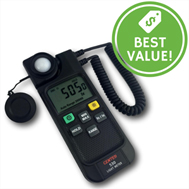
Product Code: IC-CENTER530
Well suited to basic lighting investigations, the IC-CENTER530 features a wide measurement range plus a rotatable and detachable sensor head.
Lux Range:0.0-199900 lx
Accuracy: ±3%rdg, ±5dgts
Colour Correction: No
Suitable for:Basic lighting investigations. Not ideal for measuring LED light.
Testboy TV 335 Digital LED/Lux Meter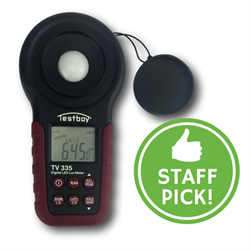
Product Code: IC-TTV-335
The Testboy TV 335 is a digital light intensity meter with an extensive measurement range (up to 400.000 Lux). The 335 has photodiodes sensitive to artificial light and adjustable colour temperature. These features make this light intensity meter suitable for measuring LED lighting.
Lux Range:20 lx, 200 lx, 2000 lx, 20000 lx, 400000 lx
Accuracy:3 % V(Lambda) adaptation 2 % cosine correction
Colour Correction: Yes
Suitable for: Various indoor lighting investigations, including artificial lighting (LEDs).
MAVOLUX Compact 5032-7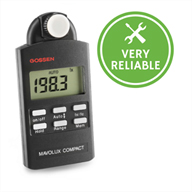
Product Code: IC-M502C
Measure practically any standard light source with the IC-M502C.This light meter features a luminosity function matching and cosine correction capability. The meter can accurately measure daylight and all artificial light sources, including LED, over a broad spectrum.
Lux Range:0.1 lx - 199 900 lx with four manual or automatic user-selectable ranges.
Accuracy:3 % of reading + 1 digit
Colour Correction: Yes
Suitable for: Daylight and almost any standard form of an indoor light source.
Conclusion
When measuring indoor light, the most crucial consideration is, what type of light do you wish to measure? Unfortunately, not all light intensity meters do the same job, which can make searching for the right light intensity meter an intimidating task.
If you need a hand finding the right light intensity meter for your application, speak with an Instrument Choice Scientist! We're here to help!
Call 1300 737 871 or email [email protected].
Appendix 1:
Examples of Light Levels
| Surfaces illuminated by | Lux |
| Full Moon | 0.05-0.3 |
| Average Family Living Room | 50 |
| Office Hallway | 80 |
| Train Station Platform | 150 |
| Office Lighting | 320-500 |
| Full daylight (not direct sun) | 10000-25000 |
| Full Daylight (direct sun) | 32000-100000 |
Also interesting
Regular pH and conductivity calibration are essential tasks for maintaining the Hanna HI98129 pH, Conductivity, and TDS Waterproof Tester. Performing calibration at constant intervals is crucial for every professional or home user who wants to ensure consistently accurate results.
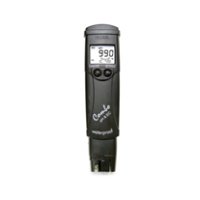
You may know that a forecast from a home weather station can predict uncomfortable or inconvenient weather.Many will be aware that a home weather station collects hyperlocal data, which is more reliable for generating a neighbourhood forecast. But while no single forecasting sensor exists, how does a home weather station generate a forecast, and what does all the reported information mean?

